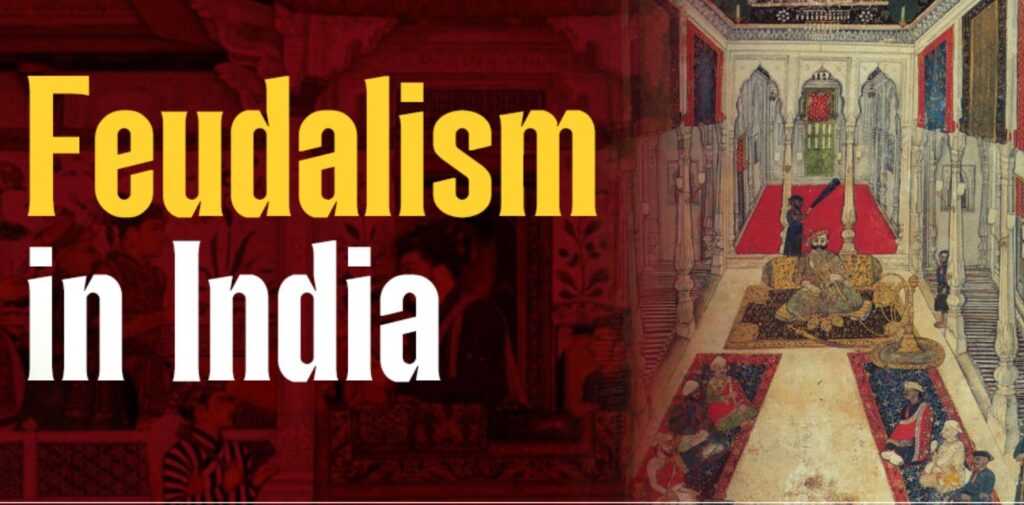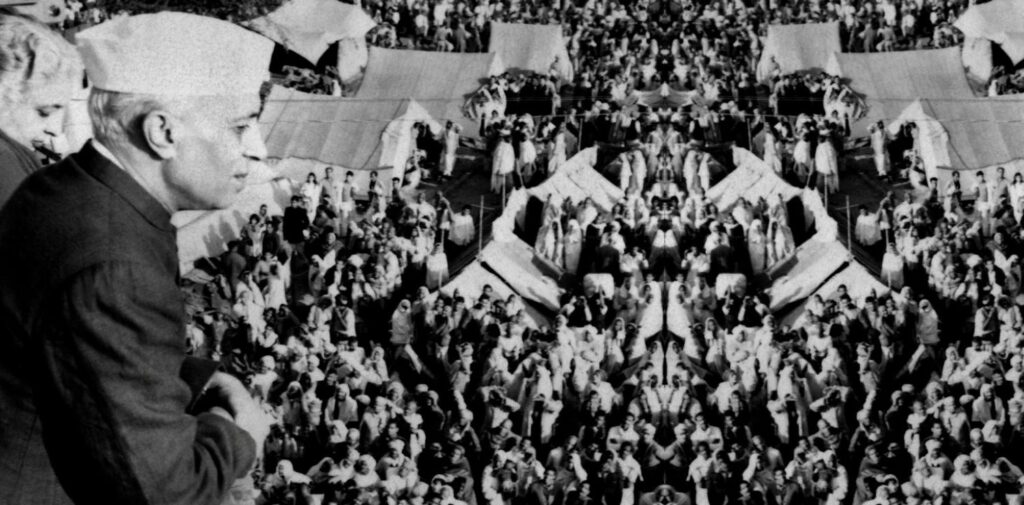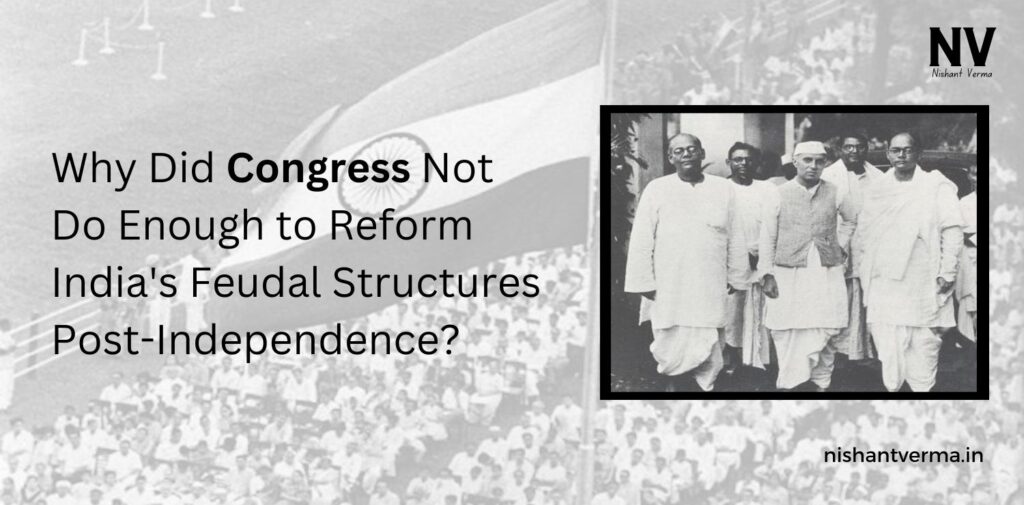After India gained independence from British rule in 1947, the country faced numerous challenges in establishing a new political, economic, and social system. Among the most pressing issues was the need to reform the old feudal system that had dominated much of the country’s rural areas for centuries. Feudalism in India was marked by a rigid social hierarchy, with landlords (zamindars) at the top, controlling vast amounts of land and resources, while peasants and laborers remained at the bottom, often bound by debt, servitude, and oppressive social structures.
The Congress Party, led by figures such as Jawaharlal Nehru, had a vision for a modern, secular, and democratic India. The party understood the importance of land reforms and was committed to breaking the shackles of feudalism. However, despite these promises, the Congress government did not do enough to Reform India Feudal Structures Post-Independence. There were several reasons for this, including political, economic, and social factors, as well as the party’s own internal contradictions and compromises.
The Nature of Feudalism in India
Feudalism in India had deep roots that went beyond mere land ownership. It was a complex system that involved the control of land, resources, and labor, often enforced through a rigid caste system and traditional social practices. Zamindars, or landowners, were at the top of the pyramid. They enjoyed considerable power and wealth, often acting as intermediaries between the British colonial rulers and the peasants working their land. In exchange for land revenue, the British allowed zamindars to maintain control over the agricultural economy and the lives of peasants.
At the other end of the spectrum, peasants worked the land under exploitative conditions. They were often bound by debt to the landlords, had little access to education, and were subjected to a social order that marginalized them based on caste. This created a vicious cycle of poverty, illiteracy, and social backwardness that the new independent India sought to address.

The Congress Party’s Initial Efforts and Land Reforms
After independence, the Congress Party led by Nehru promised to eradicate these feudal structures through land reforms. The party aimed to redistribute land from the large zamindars to the landless and poor peasants. This was considered essential to achieving social justice, increasing agricultural productivity, and creating a more equitable society.
Several important steps were taken in the early years after independence:
- Abolition of Zamindari System: One of the first actions taken by the government was to abolish the zamindari system. This meant that large landholders lost their rights to collect land revenue and hold control over peasants.
- Land Ceiling Laws: The government introduced land ceiling laws that aimed to limit the amount of land an individual could hold. Surplus land was to be redistributed among the landless and marginal farmers.
- Tenancy Reforms: Laws were passed to protect tenants who worked on land owned by others. These laws sought to ensure that tenants had secure land tenure and were not exploited by landlords.
Despite these efforts, the reality was that these reforms were not as effective as intended. A number of factors contributed to the partial success of these measures, and feudal structures persisted in many parts of the country.

Reasons for Inadequate Reform
- Political Compromises and Regional Variations: One of the primary reasons Congress did not do enough to dismantle feudal structures was the need for political compromises. India is a vast country with diverse regions, cultures, and political forces. The Congress Party needed to maintain support from a broad coalition of social classes, including the landlords and the rural elite, who wielded significant influence at the local level. In some regions, particularly in states like Uttar Pradesh, Bihar, and West Bengal, landlords and zamindars had strong political influence. The Congress Party, in its quest to consolidate power in these states, had to make compromises with these influential groups. This led to a slow and often half-hearted implementation of land reforms. In many cases, local political leaders, who were often from feudal backgrounds, were able to bypass or subvert the laws, ensuring that the status quo remained largely intact.
- Implementation Challenges: Even when land reform laws were passed, their implementation was often weak. There was a lack of political will at the local level to enforce these reforms, particularly in rural areas where feudal ties were strong. Corruption, inefficiency in government machinery, and the absence of proper monitoring mechanisms meant that many of the intended beneficiaries of land reforms, such as poor peasants and landless laborers, did not receive land or secure tenure. Additionally, the focus of the central government was often on broader economic issues such as industrialization, economic planning, and modernization, leaving the rural reforms to be handled at the state level. States like Punjab and Kerala did make strides in land reforms, but many others, particularly in the Hindi heartland and the Deccan region, lagged behind.
- Caste Dynamics and Social Hierarchies: Feudalism in India was not only about land ownership; it was also deeply intertwined with caste and social hierarchy. The Congress Party, despite its commitment to secularism and social justice, faced significant challenges in breaking down the caste system. The land reforms were supposed to benefit the poorest sections of society, but in practice, much of the redistributed land went to upper-caste individuals, who retained their social and economic privileges. Land reform laws were also often skewed in favor of small and medium landowners, who were often from the dominant castes, rather than the landless peasants from lower castes. This perpetuated caste-based inequalities and did not bring about the social change that the Congress Party had envisioned.
- Economic Constraints and Focus on Industrialization: The early years after independence saw a significant push for industrialization and modernization. Jawaharlal Nehru’s vision for India was one of rapid industrial development, and the government focused heavily on building industries, creating public sector enterprises, and modernizing the economy. While this was important for India’s long-term development, it often came at the cost of rural reforms. The economic resources that could have been allocated for rural development, land redistribution, and improving agricultural productivity were diverted towards urban and industrial sectors. This imbalance in priorities meant that rural areas continued to suffer from poverty and underdevelopment, and the feudal system in the countryside remained entrenched.
- Rise of New Rural Elites: In some regions, the abolition of the zamindari system and the introduction of land ceiling laws led to the rise of new rural elites. These were often local leaders or former peasants who were able to acquire land through political connections or manipulation of the reform process. While the old zamindars lost some of their power, the new elites often maintained or even strengthened the exploitative relationships in rural areas. This led to the continuation of feudal structures under new forms.
Conclusion: India Feudal Structures
In the years following India’s independence, the Congress Party did make attempts to reform the country’s feudal structures through land reforms and other measures aimed at promoting social justice. However, a combination of political compromises, weak implementation, caste dynamics, and economic priorities meant that these reforms were not as effective as they could have been. As a result, feudalism persisted in many parts of rural India, contributing to ongoing poverty, inequality, and social unrest.
Ultimately, while the Congress Party laid the foundation for many reforms, it did not do enough to fully dismantle the feudal system. The deep-seated social and economic structures that supported feudalism could not be easily overturned, and many of the challenges faced by rural India in the 1950s and 1960s continue to affect the country today. The failure to fully address feudalism is one of the reasons why India still grapples with issues of rural inequality, landlessness, and caste-based discrimination.




